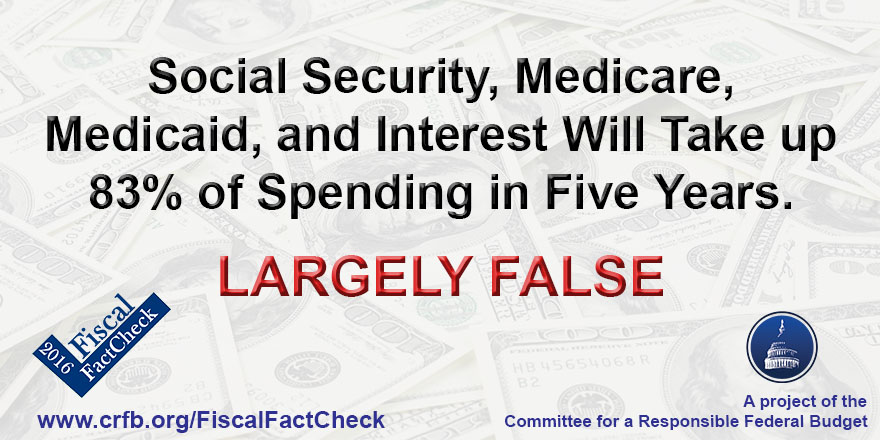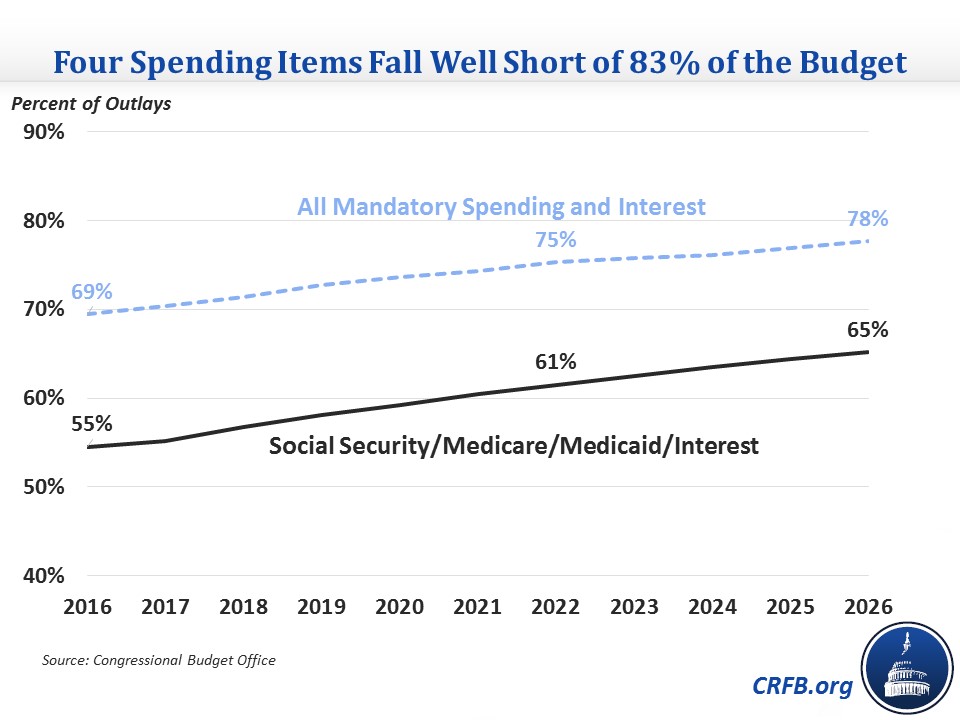Will Social Security, Medicare, Medicaid, and Interest Take up 83% of Spending in Five Years?
During the February 25 Republican presidential debate, Sen. Marco Rubio (R-FL) said:
I want to go back to this question you asked about the debt. This is an important issue. It’s a huge issue, OK? In less than five years, 83 percent of our entire budget will be made up of Social Security, Medicare, Medicaid, and the interest on the debt.
That means only 17 percent of our budget will be for things like the military or the Department of Education or environmental protection issues.

Using Fiscal Year 2022, which would be five years from when the next President takes office, Sen. Rubio’s claim that 83 percent of the budget will consist of those four items is clearly overstated (though as we show below, he would be correct by other measures). According to the Congressional Budget Office, they will take up only 61 percent of spending in 2022, and by 2026, they will take up 65 percent of spending. Even including all mandatory spending programs – which would encompass spending on things like the health exchange subsidies, low-income programs other than Medicaid, federal retirement spending, and veterans’ benefits – that share would be 75 percent in 2022 and 78 percent in 2026.

There are two ways that Sen. Rubio would have been correct. One is if he were talking about the share of spending growth going to these four budget items over the next five years. Total spending is projected to grow by $1.2 trillion in nominal dollars, and Social Security, Medicare, Medicaid, and interest will account for $1 trillion of that growth, or 83 percent. The second way would be if he referred to those four categories as a percent of revenue in 2026. These four spending categories will be about $4.2 trillion, whereas revenue will be just over $5 trillion.
In claiming that Social Security, Medicare, Medicaid, and interest spending will take up 83 percent of the budget in five years, Sen. Rubio overstates their projected share by more than 20 percentage points and even the share of all mandatory spending and interest by nearly 10 percentage points. If he had said that those four items would take up 83 percent of spending growth over the next five years or that those programs would take up 83 percent of revenue in ten years, he would be correct, but since he didn’t, his statement is largely false.
Our Rating: Largely False

